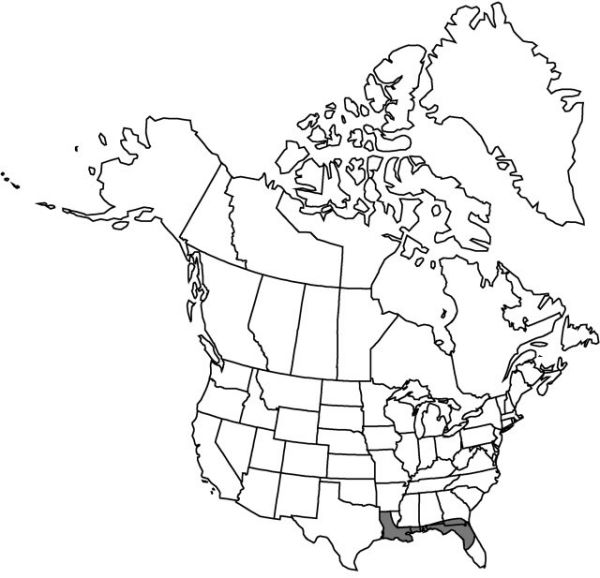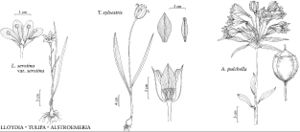Difference between revisions of "Alstroemeria pulchella"
Suppl. Pl., 206. 1782.
imported>Volume Importer |
imported>Volume Importer |
||
| Line 63: | Line 63: | ||
|publication year=1782 | |publication year=1782 | ||
|special status=Introduced;Illustrated | |special status=Introduced;Illustrated | ||
| − | |source xml=https:// | + | |source xml=https://bitbucket.org/aafc-mbb/fna-data-curation/src/2e0870ddd59836b60bcf96646a41e87ea5a5943a/coarse_grained_fna_xml/V26/V26_340.xml |
|genus=Alstroemeria | |genus=Alstroemeria | ||
|species=Alstroemeria pulchella | |species=Alstroemeria pulchella | ||
Latest revision as of 21:14, 5 November 2020
Plants erect, leafy, weak-stemmed. Leaves 1.5–3 × 6–11 cm; blade narrowly lanceolate to elliptic-spatulate on fertile shoots, broader on sterile shoots, glabrous, base cuneate, apex acute to rounded; petiole 2–4 cm. Umbels 3–8-flowered, bracteate. Flowers: tepals red to wine, spotted purplish brown, greenish at apex, narrowly spatulate, 3.5–4.5 cm, apex and margins of base slightly puberulent; pedicel 1.5–3 cm. Capsules globose, 1.3 × 1 cm, bluntish terminal portion with several spinose acuminations, each valve narrowly winged adaxially.
Phenology: Flowering mid spring–early summer.
Habitat: Loose or sandy soils in shade to partially sunny, moist, disturbed sites
Elevation: 0–100 m
Distribution

Introduced; Ala., Fla., Ga., La., Miss., Brazil.
Discussion
Alstroemeria pulchella is used as an outdoor ornamental in the warmer parts of the United States, where it has escaped and apparently become naturalized.
Selected References
None.
